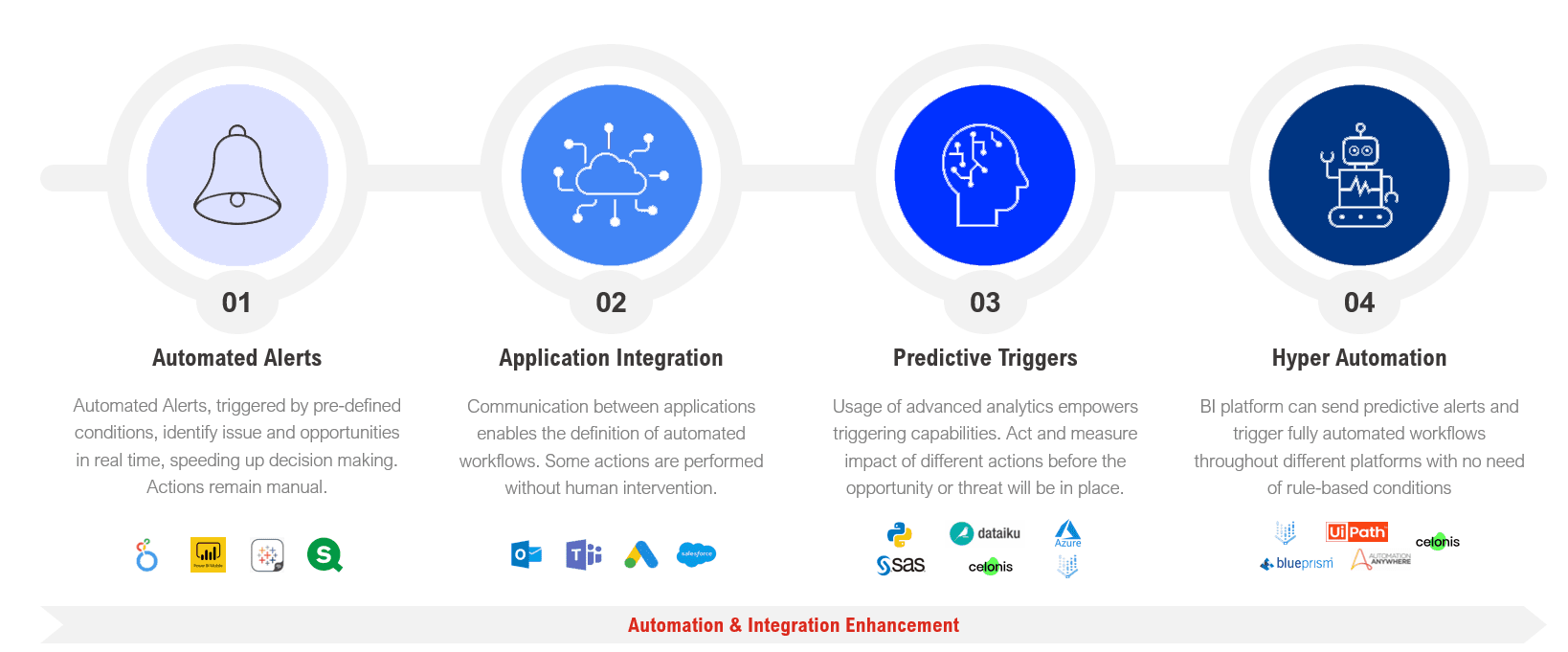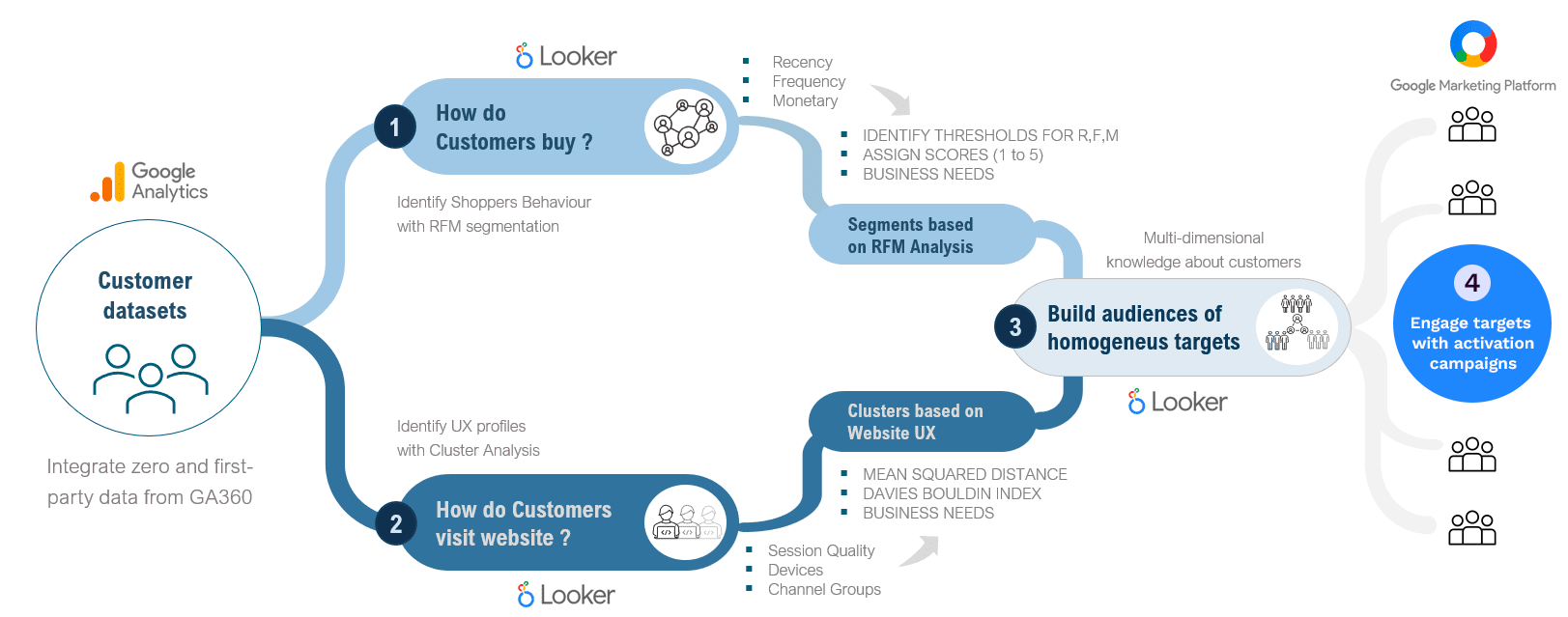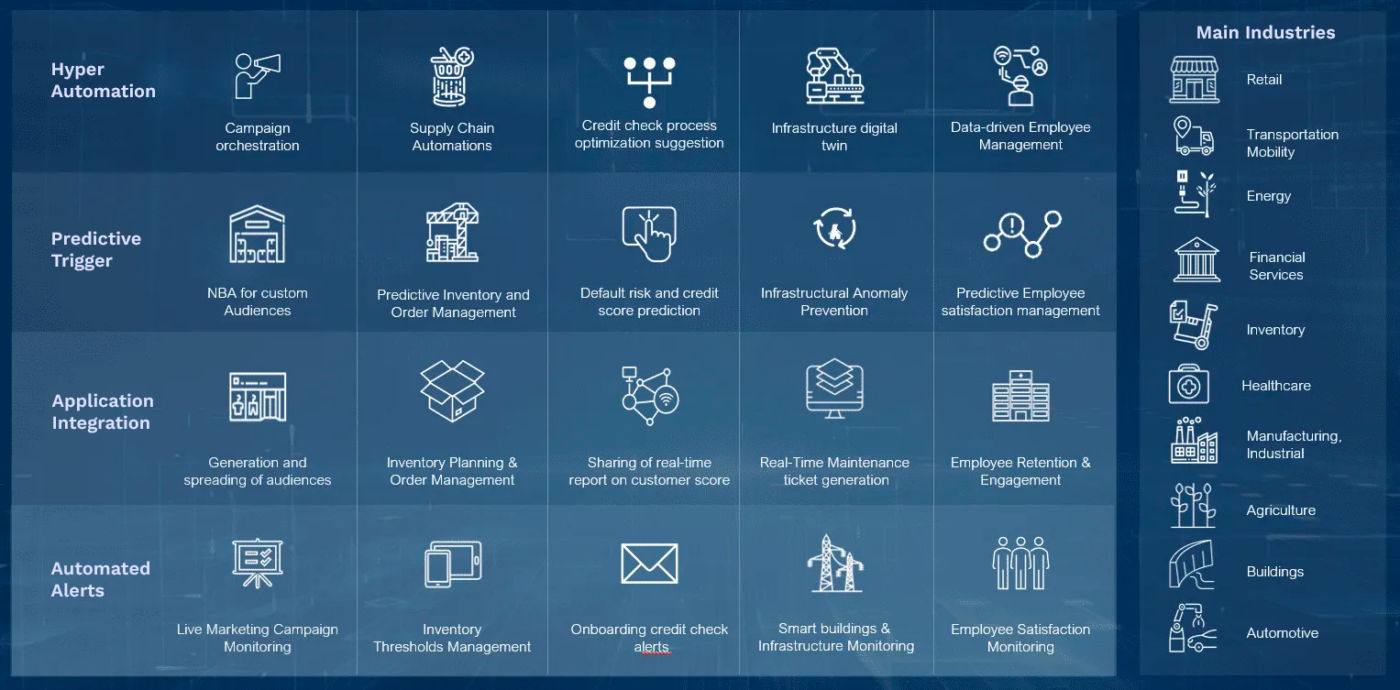Introduction

Think about the innovation brought by the introduction of GPS technology. Before GPS, people relied on maps, written directions, and their sense of direction to navigate. This often resulted in getting lost or missing important turns, making travel in unfamiliar locations challenging.
Thanks to GPS, satellite navigation (sat nav) systems were born, providing precise, real-time, turn-by-turn directions to help people reach their destinations faster and more efficiently. This technology helps avoid getting lost or stuck in traffic, acting as a reliable guide.
Autonomous vehicles represent another significant innovation, using information from GPS and other advanced systems to revolutionize driving experiences. Autonomous vehicles do not just suggest the best route; they make decisions and take actions at the driver’s seat. For instance, if a pedestrian suddenly crosses the road, the car automatically brakes without driver intervention.
Active Intelligence for Modern Businesses
Modern businesses are often overwhelmed by complex technology, Big Data, intricate internal processes, and dynamic external factors that impact decision-making. As people need sat navs to reach destinations, companies need support to optimize and automate their decision-making processes. Hyperautomation, the complete automation of business processes based on data and KPIs, can be compared to autonomous vehicles.
Although the complexity and adoption of technology differ in everyday life, Active Intelligence allows businesses to speed up decision-making and achieve goals more quickly and accurately. The primary objective of organizations adopting Active Intelligence is task automation. In its ultimate form, Active Intelligence not only provides directions like a sat nav but also reaches objectives autonomously, much like an autonomous vehicle.
What is Active Intelligence
Traditional BI focuses on providing insights and enabling business monitoring but often fails to drive actions, which are usually performed manually. Business users often juggle various tools, adding steps and slowing down processes. These limitations set the stage for Active Intelligence (AI).
Active Intelligence is the evolutionary path of Augmented BI, incorporating activation functionalities that shift BI from having an indirect impact on business to a direct one. The goal is to go beyond monitoring and insight generation by triggering immediate actions integrated with external systems. Due to its advanced capabilities, AI enables businesses to react promptly to opportunities and threats.
Active Intelligence is a combination of Business Intelligence, Business Automation, APIs, and low-code platforms. It starts with BI data and, when certain triggers are activated, it can perform a range of actions in other tools or platforms.
The Competitive Advantages of Active Intelligence
The benefits of developing an Active Intelligence solution can be summarized in four key areas:
- Dynamic Alerting: Intelligent alerts notify users when potential issues or opportunities arise, allowing for immediate analysis and action.
- 3rd Party Integrations: Active Intelligence enables communication between different applications, allowing BI platforms to send or receive alerts and data inputs.
- Low Code Automations: Automation with minimal coding accelerates application delivery and empowers business users.
- Augmented Analytics: Advanced analytics capabilities enable predictive, non-rule-based alerts and automated workflows.
To achieve the highest level of Active Intelligence, companies can enhance their decision-making processes by advancing their automation and integration capabilities. Datwave has identified an evolutionary framework of Active Intelligence based on four steps:

1. Automated Alerts
Automated alerts in Business Intelligence are notifications or messages triggered automatically based on predefined criteria or conditions. They help organizations stay informed and take prompt action when important events occur.
These alerts can monitor various metrics, such as sales performance, customer behavior, or supply chain performance. For instance, an alert might notify a manager when sales in a particular region fall below a threshold or when the inventory level of a critical item drops. This allows for swift responses to changing business conditions.
Alerts can be delivered via email, SMS, or push notifications and customized to meet user needs. However, while alerts provide valuable information, actions remain manual.
2. Application Integration
Application integration is a critical step in the Business Intelligence evolutionary roadmap, as it connects BI tools to other systems, bringing data closer to decisions and actions.
Integrating external applications with BI systems allows access to various systems and departments in a unified way, enhancing decision-making accuracy and increasing user capabilities. For example, integration with communication tools like Teams or Jira can automate processes, such as sending notifications or creating tasks directly from BI dashboards.
Application integration reduces manual efforts, streamlining business processes and freeing up time for strategic tasks.
3. Predictive Triggers
Predictive triggers represent the AI-driven evolution of automated alerts. They are based on predictive models that identify future events or outcomes using historical data and other relevant information. Predictive triggers enable organizations to anticipate potential issues or opportunities, allowing for proactive measures.
For instance, a predictive alert might warn a sales manager of an imminent drop in sales, prompting preventive actions like reprogramming product orders based on demand forecasts. Predictive triggers help optimize operations, identify inefficiencies, and take proactive steps to improve performance.
4. Hyperautomation
Hyperautomation is the final and most advanced stage in the evolution of Active Intelligence, enabling organizations to automate tasks, processes, and decisions at scale. Leveraging AI, machine learning, and other advanced technologies, hyperautomation automates repetitive and complex tasks, freeing resources for strategic activities.
Through hyperautomation, Active Intelligence extends its capabilities by triggering fully automated workflows across platforms without rule-based conditions. Unlike predictive triggers, hyperautomation adds intelligence, allowing Active Intelligence to make autonomous decisions and trigger custom workflows.
Practical Applications of Active Intelligence
Operational Monitoring Solution
For a key player in the Financial Services and Logistics sectors, Datwave developed a custom monitoring system for top management. This system offers a comprehensive, up-to-date view of company activities, detects abnormal trends, and enables fast-response actions. The solution integrates near real-time data retrieval, data from all business lines, and alerting tools.

The front end, based on Power BI, provides interactive reports tailored for specific business lines. An alerting system was implemented to create Teams notifications in two ways:
- Periodic Notifications: Every 10–20 minutes, a notification is sent to a dedicated Teams channel, providing additional details beyond the dashboard charts.
- Proactive Alerting: Critical KPIs trigger alarms with further information, and reminders are sent until KPI values normalize.
Smart Audience
Leveraging Active Intelligence, Datwave developed an AI-Based Audience Generator for a European e-commerce and fashion industry player. The tool integrates zero and first-party data to perform AI-based analyses on customer behavior, enhancing audience creation and enabling automatic list distribution to various activation channels.
Datwave’s solution empowers marketers with Active Intelligence tools to augment customer data analysis and campaign execution capabilities. Audiences can be pushed to activation channels like Google Marketing Platform, Google Ads, or CRM systems, facilitating high-performance campaigns.

Where to start?
The business automation and API integration market is growing rapidly due to the significant advantages for businesses. Active Intelligence unifies these disciplines with advanced analytics and business intelligence, pushing companies to achieve peak efficiency and elevate decision-making.
Despite its benefits, Active Intelligence requires specific capabilities that many businesses have yet to develop, and companies often lack awareness of its potential.
At Datwave, we see Active Intelligence applied across various industries and use cases. Datwave supports clients in adopting Active Intelligence solutions, offering end-to-end project assistance—from designing use cases tailored to client contexts to developing and deploying solutions.

Disclaimer
In this article, some products/vendors have been mentioned as examples to illustrate some advanced functionalities. Datwave has partnerships with many of these vendors but, aligned with our vendor independence strategy, we maintain as technology agnostic and, therefore, we are able to recommend the best solution depending on the client need, leveraging on a group of experts certified in most of these technologies.
References
- https://www.bigdata4innovation.it/data-analytics/active-intelligence/
- https://www.qlik.com/it-it/active-intelligence
- https://www.smeup.com/magazine/blog/active-intelligence-data-driven/
- https://www.cio.com/article/191833/unlocking-the-success-of-digital-transformation-with-active-intelligence.html
- https://blog.alertfusion.com/how-automated-alert-management-helps-improve
- https://www.gartner.com/smarterwithgartner/welcome-to-the-api-economy
- https://www.gartner.com/en/information-technology/glossary/hyperautomation
- https://www.ibm.com/cloud/blog/basics-of-business-automation
- https://www.ibm.com/topics/process-mining
